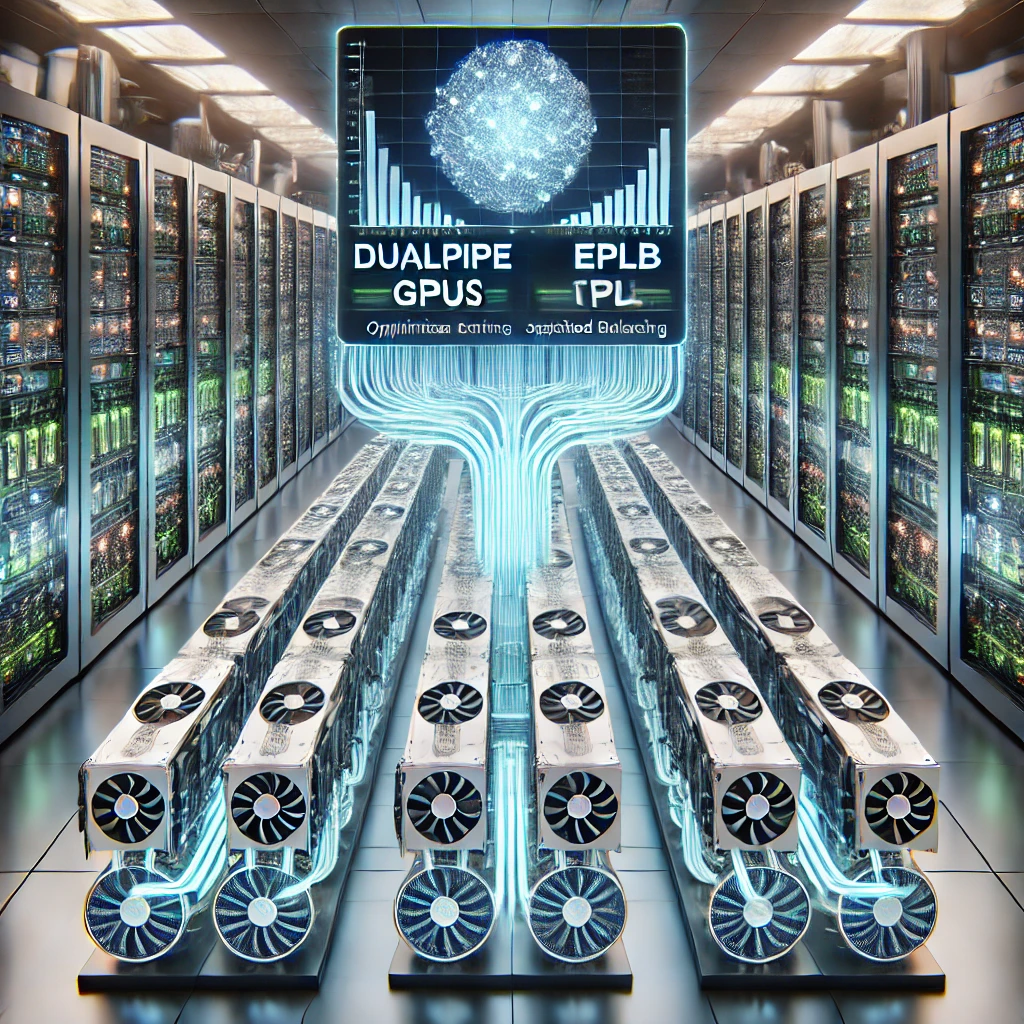Introduction
The rapid advancement of artificial intelligence (AI) has led to an increased demand for more efficient and powerful training methodologies. DualPipe and EPLB (Efficient Pipeline Load Balancing) are two emerging technologies that aim to significantly boost AI training speed, reduce computational bottlenecks, and optimize resource allocation. These innovations are shaping the future of AI development by making training models more scalable, cost-effective, and efficient.
This article explores how DualPipe and EPLB function, their benefits, real-world applications, and their impact on the future of AI training.
Understanding DualPipe and EPLB
What is DualPipe?
DualPipe is a parallelized data processing pipeline designed to accelerate AI training. It allows multiple data streams to be processed simultaneously, reducing latency and bottlenecks in the training process. Instead of sequentially handling tasks, DualPipe splits data handling into two parallel processing pipelines, significantly increasing throughput and model convergence rates.
What is EPLB (Efficient Pipeline Load Balancing)?
EPLB is an optimized workload distribution framework designed to balance computational loads across GPUs, TPUs, and CPUs. It ensures that resources are utilized efficiently by dynamically distributing tasks based on hardware availability, preventing underutilization or overload of processing units.
By integrating DualPipe and EPLB, AI training pipelines can experience significant improvements in speed, accuracy, and computational efficiency.
The Need for Faster AI Training
1. Growing Model Complexity
As AI models grow in complexity, they require more data and computational power to achieve higher accuracy. Traditional training methods often struggle to keep up with the increasing demands of deep learning models.
2. High Computational Costs
Training AI models is expensive due to the enormous energy consumption and hardware costs. Efficient pipeline optimization techniques like DualPipe and EPLB help reduce resource wastage and cut down training expenses.
3. Data Bottlenecks and Latency Issues
Standard AI training pipelines often experience data flow bottlenecks, slowing down training progress. By parallelizing data streams (DualPipe) and balancing computational workloads (EPLB), AI training becomes faster and more seamless.
How DualPipe and EPLB Work
1. Parallel Data Processing with DualPipe
- DualPipe splits training data into two separate processing paths.
- Each path handles different aspects of data (e.g., feature extraction, preprocessing, augmentation).
- This method reduces training time by ensuring that models are constantly fed with new data without delays.
2. Load Balancing with EPLB
- EPLB analyzes GPU, TPU, and CPU workloads in real-time.
- It dynamically redistributes tasks to prevent resource bottlenecks.
- This results in higher GPU utilization rates and optimized memory usage.
3. Seamless Integration with AI Frameworks
- DualPipe and EPLB can be integrated into existing frameworks like TensorFlow, PyTorch, and JAX.
- AI developers can use these technologies without modifying core architectures, making adoption easier.
Key Benefits of DualPipe and EPLB
1. Increased Training Speed
By enabling parallel data pipelines and efficient workload balancing, AI models can be trained faster than conventional methods.
2. Reduced Computational Costs
Better resource utilization means lower energy consumption, reducing overall computational expenses.
3. Improved Scalability
AI projects that require scaling to multiple GPUs or cloud environments benefit from EPLB’s load balancing capabilities.
4. Higher Model Accuracy
Efficient data flow and load balancing result in faster convergence, leading to more accurate AI models.
5. Better Resource Allocation
EPLB ensures that no hardware resources are overloaded or underutilized, optimizing real-time AI applications.
Real-World Applications
1. Deep Learning for Healthcare
AI in healthcare relies on large datasets for medical image analysis, diagnostics, and predictive modeling. DualPipe and EPLB help reduce training time for AI-powered disease detection systems.
2. Autonomous Vehicles
Self-driving cars require rapid AI training for computer vision and decision-making models. These technologies enhance real-time data processing for improved safety and performance.
3. Financial AI and Algorithmic Trading
Stock market prediction models must process high-frequency data quickly. EPLB ensures that trading algorithms remain responsive and efficient.
4. Natural Language Processing (NLP)
Large language models (LLMs) require vast amounts of text data for training. DualPipe accelerates NLP model training for applications like ChatGPT, virtual assistants, and AI-driven content creation.
5. AI-Powered Robotics
Robotics systems use AI models to interpret sensory data and make autonomous decisions. DualPipe enhances data flow management, improving robotic learning speeds.
Challenges and Future Improvements
1. Implementation Complexity
- DualPipe and EPLB require custom pipeline configurations, making initial adoption challenging.
- Future advancements may simplify integration into AI frameworks.
2. Hardware Dependency
- Optimal performance depends on high-end GPUs and TPUs.
- Cloud-based AI training solutions may help reduce hardware constraints.
3. Compatibility with Legacy AI Models
- Some older AI architectures may need modifications to benefit from these technologies.
- Future updates may include backward compatibility for wider adoption.
The Future of AI Training with DualPipe and EPLB
1. AI Model Training at Scale
With advancements in cloud computing and edge AI, DualPipe and EPLB could enable massive AI model training at a global scale.
2. Automated AI Training Pipelines
Future developments may include self-optimizing AI training pipelines that dynamically adjust learning rates, batch sizes, and resource allocation without human intervention.
3. Integration with Quantum Computing
As quantum computing advances, DualPipe and EPLB could be adapted to leverage quantum machine learning, opening new possibilities in AI development.
Conclusion
The introduction of DualPipe and EPLB marks a major step forward in AI training efficiency. By enabling parallel data processing and intelligent resource distribution, these technologies significantly reduce training times, enhance model accuracy, and optimize computational resources.
As AI continues to evolve, DualPipe and EPLB will play a crucial role in accelerating breakthroughs across industries like healthcare, finance, robotics, and autonomous systems. By addressing current challenges and expanding integration options, these innovations are paving the way for faster, more efficient AI model training.
With ongoing research and development, the future of AI training looks more promising than ever, driven by smarter, more efficient pipeline optimizations.









+ There are no comments
Add yours